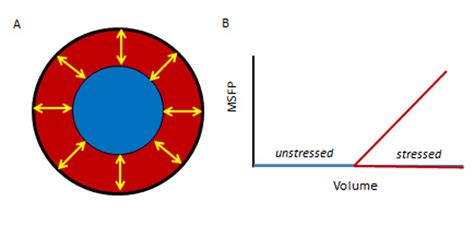lv unstressed volume|stressed blood volume and venous tone : 2024-10-04 In this review, we discuss the important role of the venous system and the concepts of stressed blood volume and unstressed blood volume. We review how regulation of venous tone modifies the . This guide covers how best to gear at endgame for your crafting classes, which stats to meld for, and what choices you should make when it comes to gearing.
0 · stressed blood volume chart
1 · stressed blood volume and venous volume
2 · stressed blood volume and venous tone
This page covers the best melds and consumables for Summoner DPS in FFXIV (updated for Endwalker, Patch 6.55).
lv unstressed volume*******In this review, we discuss the important role of the venous system and the concepts of stressed blood volume and unstressed blood volume. We review how regulation of venous tone modifies the .
This also relates to the concepts of “unstressed volume” and “stressed volume” and how BV is functionally (not anatomically) partitioned within the circulatory system. 3, 4 Unstressed volume .
We review how regulation of venous tone modifies the distribution of blood between these 2 functional compartments, the physical distribution of blood between the .The left ventricular end-diastolic volume (LVEDV)/LV end-diastolic pressure (LVEDP) curve reflects the compliance of the LV. In systole, the LV starts to contract while both .

An important concept for the understanding of venous return is that of stressed and unstressed volume. The venous system, like any other elastic structure, . Of the total blood volume, only about 15% exerts pressure, and the rest is said to be “unstressed volume”, which theoretically exerts no pressure (or minimal .

Unstressed intravascular volume can be defined as that vol-ume required to fill the circulatory system to capacity without any increase in transmural pressure (2). Stressed . The X intercept of the venous return curve represents mean systemic filling pressure, which increases with higher stressed blood volume (SBV). In controls, venous capacitance is high, meaning that .In the setting of trauma, the mechanism of cardiovascular instability is often hypovolemia secondary to hemorrhage; whereas in sepsis, the initial mechanism is increased . In this review, we discuss the role of the venous system and the concepts of stressed blood volume (SBV) and unstressed blood volume (UBV). We discuss how regulation of venous tone modifies the distribution of . In this review, we discuss the important role of the venous system and the concepts of stressed blood volume and unstressed blood volume. We review how regulation of venous tone modifies the distribution of blood between these 2 functional compartments, the physical distribution of blood between the pulmonary and systemic . This also relates to the concepts of “unstressed volume” and “stressed volume” and how BV is functionally (not anatomically) partitioned within the circulatory system. 3, 4 Unstressed volume relates to the quantity of BV needed to fill the vascular space without increasing pressure above zero—a common analogy is that of filling a .
We review how regulation of venous tone modifies the distribution of blood between these 2 functional compartments, the physical distribution of blood between the pulmonary and systemic circulations, and how these relate to the hemodynamic abnormalities observed in HF.
The left ventricular end-diastolic volume (LVEDV)/LV end-diastolic pressure (LVEDP) curve reflects the compliance of the LV. In systole, the LV starts to contract while both the mitral valve and aortic valves are closed—the phase .
An important concept for the understanding of venous return is that of stressed and unstressed volume. The venous system, like any other elastic structure, will fill with a certain volume, called the 'unstressed' volume, without changing the pressure or causing distention of the structures.
Of the total blood volume, only about 15% exerts pressure, and the rest is said to be “unstressed volume”, which theoretically exerts no pressure (or minimal pressure) on the walls of the vessels.stressed blood volume and venous toneUnstressed intravascular volume can be defined as that vol-ume required to fill the circulatory system to capacity without any increase in transmural pressure (2). Stressed volume would be that amount that, when added to the unstressed volume, gen-erates the vascular transmural pressure. To grasp the concept of
The X intercept of the venous return curve represents mean systemic filling pressure, which increases with higher stressed blood volume (SBV). In controls, venous capacitance is high, meaning that most of blood volume resides in the unstressed blood volume (UBV) compartment and SBV is low.
In the setting of trauma, the mechanism of cardiovascular instability is often hypovolemia secondary to hemorrhage; whereas in sepsis, the initial mechanism is increased unstressed blood volume due to a generalized inflammatory response-induced vasoplegia. However, with massive pulmonary embolism, cardiovascular. In this review, we discuss the role of the venous system and the concepts of stressed blood volume (SBV) and unstressed blood volume (UBV). We discuss how regulation of venous tone modifies the distribution of . In this review, we discuss the important role of the venous system and the concepts of stressed blood volume and unstressed blood volume. We review how regulation of venous tone modifies the distribution of blood between these 2 functional compartments, the physical distribution of blood between the pulmonary and systemic .lv unstressed volume This also relates to the concepts of “unstressed volume” and “stressed volume” and how BV is functionally (not anatomically) partitioned within the circulatory system. 3, 4 Unstressed volume relates to the quantity of BV needed to fill the vascular space without increasing pressure above zero—a common analogy is that of filling a . We review how regulation of venous tone modifies the distribution of blood between these 2 functional compartments, the physical distribution of blood between the pulmonary and systemic circulations, and how these relate to the hemodynamic abnormalities observed in HF.The left ventricular end-diastolic volume (LVEDV)/LV end-diastolic pressure (LVEDP) curve reflects the compliance of the LV. In systole, the LV starts to contract while both the mitral valve and aortic valves are closed—the phase . An important concept for the understanding of venous return is that of stressed and unstressed volume. The venous system, like any other elastic structure, will fill with a certain volume, called the 'unstressed' volume, without changing the pressure or causing distention of the structures. Of the total blood volume, only about 15% exerts pressure, and the rest is said to be “unstressed volume”, which theoretically exerts no pressure (or minimal pressure) on the walls of the vessels.
lv unstressed volume stressed blood volume and venous toneUnstressed intravascular volume can be defined as that vol-ume required to fill the circulatory system to capacity without any increase in transmural pressure (2). Stressed volume would be that amount that, when added to the unstressed volume, gen-erates the vascular transmural pressure. To grasp the concept of
At level 70, Polyglot is added to the Black Mage Elemental Gauge. On the bottom right of the gauge, a meter will build up while Astral Fire or Umbral Ice are active. Every 30 seconds, this bar will fill and add a Polyglot to the gauge, designated by the bottom crystal, which can be used on Foul.
lv unstressed volume|stressed blood volume and venous tone











